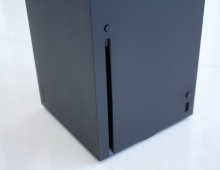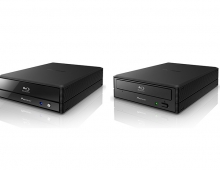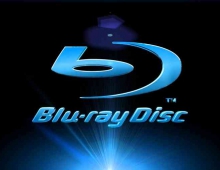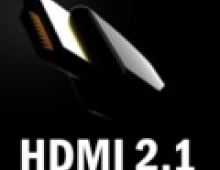
High Definition Content Strongly Protected
The new content security scheme for high definition content stored on either HD-DVD and Blu-Ray media will be far more different than what you have experienced with curent DVDs.
The content protection issue seems to be crucial for both rival backers of high definition technology. Sony, Toshiba, Matsushita, Philips, under the pressure of the Hollywood movie Industry, have jointly made it clear that their technologies should fullfil the requierements that would ensure unauthorized copying, playback and distribution of HD content. And the solution they have come up with forms a new copy prevention scheme, which is different from the famous CSS (Content Scrambling System) used in DVD Video.
Consider the scenario where the HD contents of digital broadcasts are ought to be recorded on a Blu-Ray Rewritable (BD-RE) or a corresponding HD-DVD Recordable medium. First of all, the broadcast HD contents will include copy control information, as also happens in today's satellite TV programs.
Before the start of recording, copy control information within the digital broadcast signal is detected. If copying is allowed, (after content authentication interactivity occur as explained later) the contents and copy control information are encrypted and recorded on the disc. During playback, the recorded contents and copy control information will be decoded and output only from a device on which the contents protection technology is installed.
The High Density broadcast contents will be protected by using a 128-bit Advanced Encryption Standard (AES) encryption key. This key will change several hundred times during one minute of HD playback.
In addition, the copy protection scheme requires the use of a unique ID code for each disk. Both a Reneweal Key Block (RKB) and a Disc ID unique to the disc are written in the ROM area of the disc. Each legal recorder or player will have a device key, which differs depending on the manufacturer or the machine. An encryption key will be generated by combining the device key and the RKB. This will help the exclusion of illegal devices (System Renewability) and the prevention of illegal copying.
Therefore, illegal devices can be excluded by updating the RKB information, provided by the HD technology authorities (AACS). The RKB information will be stored in the player's ROM and will be possibly upgradable through the internet.
As a result, the encryption key will be generated by using the unique to each disc ID, making bit-by-bit copying ineffective.
In addition to such highly-secure coding during recording, the industry will implement the content protection technology in the interface that will output playback contents. The HDMI digital interface (DTCP protected) will be mainly used as an output / input of HD video and audio. This requires that your TV set should be compatible with HDMI, meaning that it should be equipped with such an input, in order to enjoy content in high definition format. Differently, passing the HDMI signal to the analogue port of your TV will mean a downgrade of the image resolution to 480 pixels.
Consider the scenario where the HD contents of digital broadcasts are ought to be recorded on a Blu-Ray Rewritable (BD-RE) or a corresponding HD-DVD Recordable medium. First of all, the broadcast HD contents will include copy control information, as also happens in today's satellite TV programs.
Before the start of recording, copy control information within the digital broadcast signal is detected. If copying is allowed, (after content authentication interactivity occur as explained later) the contents and copy control information are encrypted and recorded on the disc. During playback, the recorded contents and copy control information will be decoded and output only from a device on which the contents protection technology is installed.
The High Density broadcast contents will be protected by using a 128-bit Advanced Encryption Standard (AES) encryption key. This key will change several hundred times during one minute of HD playback.
In addition, the copy protection scheme requires the use of a unique ID code for each disk. Both a Reneweal Key Block (RKB) and a Disc ID unique to the disc are written in the ROM area of the disc. Each legal recorder or player will have a device key, which differs depending on the manufacturer or the machine. An encryption key will be generated by combining the device key and the RKB. This will help the exclusion of illegal devices (System Renewability) and the prevention of illegal copying.
Therefore, illegal devices can be excluded by updating the RKB information, provided by the HD technology authorities (AACS). The RKB information will be stored in the player's ROM and will be possibly upgradable through the internet.
As a result, the encryption key will be generated by using the unique to each disc ID, making bit-by-bit copying ineffective.
In addition to such highly-secure coding during recording, the industry will implement the content protection technology in the interface that will output playback contents. The HDMI digital interface (DTCP protected) will be mainly used as an output / input of HD video and audio. This requires that your TV set should be compatible with HDMI, meaning that it should be equipped with such an input, in order to enjoy content in high definition format. Differently, passing the HDMI signal to the analogue port of your TV will mean a downgrade of the image resolution to 480 pixels.





















